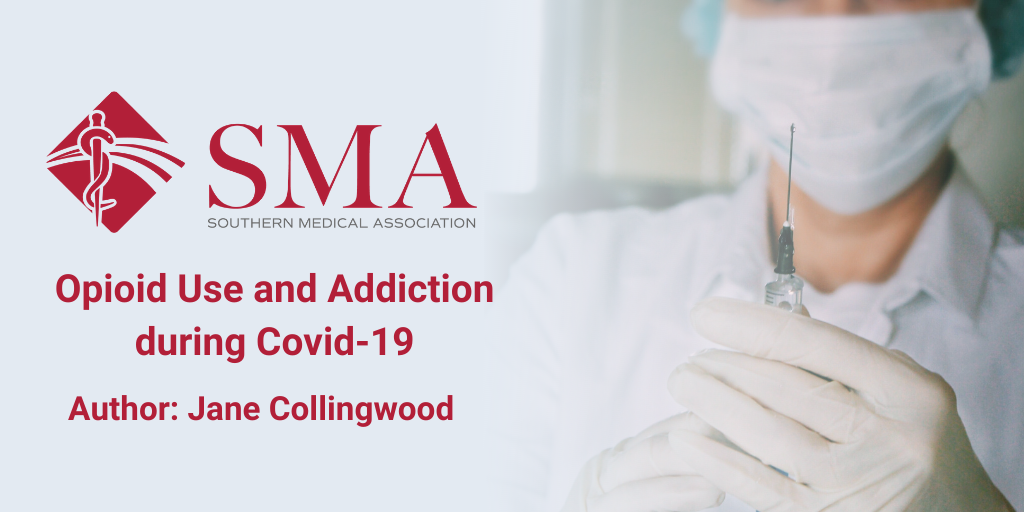New figures have revealed a steep rise in the rate of deaths due to opioid overdose since the beginning of the Covid-19 pandemic. National statistics up to May 2020, published by the Centers for Disease Control and Prevention (CDC), suggest that synthetic opioids are the main driver of this increase.
In particular, there has been a sharp rise in the use of fentanyl, a powerful synthetic opioid which is increasingly produced illicitly, due to a shift in drug supply availability. Fentanyl is being detected in samples of heroin, creating effects such as euphoria, drowsiness, confusion, sedation, respiratory depress and arrest. This can lead to unconsciousness, coma and death.
Fentanyl is approximately 50 times more potent than heroin and 100 times more potent than morphine. As little as 2mg of Fentanyl is potentially fatal, so it greatly increases the risk of overdose.
The CDC statistics show that there were 81,003 drug overdose deaths in the United States in the year ending in May 2020. This represents the highest number ever recorded in a 12-month period.
Overdose deaths were already rising in advance of the Covid-19 pandemic, but the latest numbers suggest an acceleration during the pandemic, beginning with a spike in Spring 2020.
The rate of overdose deaths linked to synthetic opioids increased by 38.4% in the year ending May 2020 compared with the previous 12 months. Increases in synthetic opioid-involved overdose deaths were seen in 37 of the 38 US jurisdictions with available data during this time period, with increases greater than 50% seen in 18 of these jurisdictions.
In addition to synthetic opioid-related deaths, those linked to cocaine rose by 26.5%, and those involving psychostimulants rose by 34.8%.
Debra Houry, M.D., M.P.H., of the CDC commented, “Early in the pandemic, there was disruption to treatment services. We’re also hearing about disruptions to the drug market. The increase in overdose deaths is concerning. The disruption to daily life due to the Covid-19 pandemic has hit those with substance use disorder hard.
"As we continue the fight to end this pandemic, it’s important to not lose sight of different groups being affected in other ways. We need to take care of people suffering from unintended consequences. Our priority is to do everything we can to equip people on the ground to save lives in their communities.”
Opioid addiction is prevalent in Southeastern states, with the present overdose crisis compounded in this region, as in others, with factors such as job loss, homelessness and comorbidity.
A spike in overdoses was seen in North Carolina during the spring and early summer of 2020. Overall, emergency room visits were down due to the virus, but the number of overdose-related visits were up to a rate 23% higher than in 2019. As in other areas of the US, fentanyl became an even bigger problem in North Carolina over the course of the pandemic. But following wider distribution of the opioid-reversal agent naloxone into local communities, the number of overdose emergency room visits is coming down.
Drug overdose deaths rose 15% in Tennessee last year, from 1,818 in 2018 to 2,089 in 2019. Health officials in the area say overdose deaths in 2020 are on track to exceed 2019 rates. Much of these are attributed to illicit fentanyl and psychostimulants, a category that includes methamphetamine. Nonfatal opioid overdoses also increased in 2020, peaking during the early months of the pandemic.
In Georgia, the number of reported overdoses is also rising amid the pandemic. Georgia’s Department of Public Health has noted a rise in drug overdose-involved emergency room visits throughout the state, overlapping with the emergence of Covid-19. The number of fentanyl-involved overdose deaths in the state has risen by 17% from December 2019 through April 2020, as compared with the previous five-month period.
The Covid-19 pandemic has exacerbated this crisis in a variety of ways. It has caused stress, isolation, and financial anxieties which are common triggers for drug addiction and relapse among those with substance use disorders.
Social distancing has severely limited the resilience-building support structures normally in place for those at risk of relapse and coping methods like physical activity are limited.
In addition, the financial impact of the pandemic has forced the closure of many treatment services. Healthcare systems facing reduced funds have cut or drastically reduced addiction treatment programs, at a time when they are most needed.
The pandemic has brought specific challenges for those struggling with substance use disorders. A hypersensitivity to stress may be combined with a diminished capacity to experience normal levels of reward, increasing the chance of relapse. Those who start using again after a period of time are susceptible to overdose because their tolerance has reduced.
Furthermore, people are more likely to die from overdose if they are using drugs alone, because no one is there to call 911 or give naloxone.
Despite the challenges faced by organizations that provide treatment and support in the past year, adaptations are sometimes possible and many providers have found novel ways to overcome the obstacles. Appointments for people in recovery can be made possible within the limits of safe distancing in clinics and perhaps with rapid pre-testing.
The ability to access care from a distance has led to marked benefits during the pandemic. The increased availability of telemedicine for substance use disorders gives options that otherwise wouldn't exist. Insurance providers and organizations are increasingly recognizing the need for this form of healthcare, lifting previous restrictions on telehealth approaches for behavioral health issues.
Federal, local and state rules have been relaxed due to the pandemic and it is currently possible for a physician to prescribe buprenorphine, a drug used for opioid recovery, to patients via telehealth - video or audio calls - without the requirement for an in-person evaluation.
It is also easier to prescribe the medication across state lines, and the rules for take-home doses of methadone have been eased, with patients allowed larger gaps between in-person clinic visits and even to have methadone delivered to their home.
These changes are currently only in effect until the public health emergency ends, however, some advocates and providers are calling for their extension or even to make many of the rule changes permanent.
One-to-one therapy and group support sessions are frequently moving online, with community-based groups like Narcotics Anonymous and Alcoholics Anonymous increasingly meeting virtually.
Accessing this type of treatment and support can be difficult for people without reliable internet or phone service, but numbers of patients using these services are rising. The availability of telehealth may encourage some people to seek help who may not otherwise have attended in-person services.
Each person dealing with a substance use disorder has their own set of circumstances so expanding the spectrum of care could be beneficial. While online clinics and meetings work for some, they aren't best for everyone.
Summing up the situation in a February 2021 article on drug testing in the journal Population Health Management, Harvey W. Kaufman, MD, of Quest Diagnostics, Secaucus, NJ, warns, "The convergence of the drug abuse epidemic and Covid-19 pandemic has led to an increased need for healthcare and public health resources dedicated to supporting vulnerable patients and addressing the underlying causes of these disturbing trends."
One long term consequence of the pandemic could be a permanent increase in the variety of options for care, opening up the possibility of reaching out to a larger number of people. This is more necessary than ever in light of the opioid crisis we are currently witnessing.
References and Resources
- https://www.drugwise.org.uk/fentanyl/
- https://www.cdc.gov/media/releases/2020/p1218-overdose-deaths-covid-19.html
- https://www.ama-assn.org/system/files/2020-12/issue-brief-increases-in-opioid-related-overdose.pdf
- https://www.statnews.com/2021/02/16/as-pandemic-ushered-in-isolation-financial-hardship-overdose-deaths-reached-new-heights/
- https://www.nbcnews.com/health/health-news/overdose-deaths-appear-rise-amid-coronavirus-pandemic-u-s-n1244024
- https://www.apa.org/monitor/2021/03/substance-use-pandemic
- https://www.nahb.org/advocacy/industry-issues/safety-and-health/opioids-in-the-home-building-industry/opioid-resources-southeastern-us
- https://www.northcarolinahealthnews.org/2021/02/05/covid-19-stressors-fuel-surge-in-overdoses-of-opioids-contaminated-street-drugs/
- https://www.liebertpub.com/doi/10.1089/POP.2020.0230
- https://www.memphisflyer.com/NewsBlog/archives/2020/12/03/covid-19-could-compound-holiday-suicides-drug-overdoses
- https://www.wabe.org/nonprofits-respond-to-a-reported-rise-in-overdoses-in-georgia-amid-the-pandemic/




 Mark Massey is Vice President of SMA Services Inc. A wholly owned subsidiary of the Southern Medical Association (SMA). With over 800 plans sold and over 30 years in the business, Mark has built his reputation as the go-to-person when it comes to qualified retirement plan design. His expertise in retirement plan strategies for business owners and their employees is second to none.
Mark Massey is Vice President of SMA Services Inc. A wholly owned subsidiary of the Southern Medical Association (SMA). With over 800 plans sold and over 30 years in the business, Mark has built his reputation as the go-to-person when it comes to qualified retirement plan design. His expertise in retirement plan strategies for business owners and their employees is second to none.




 Saturday, April 17, 12:20-1:00 pm
Saturday, April 17, 12:20-1:00 pm




